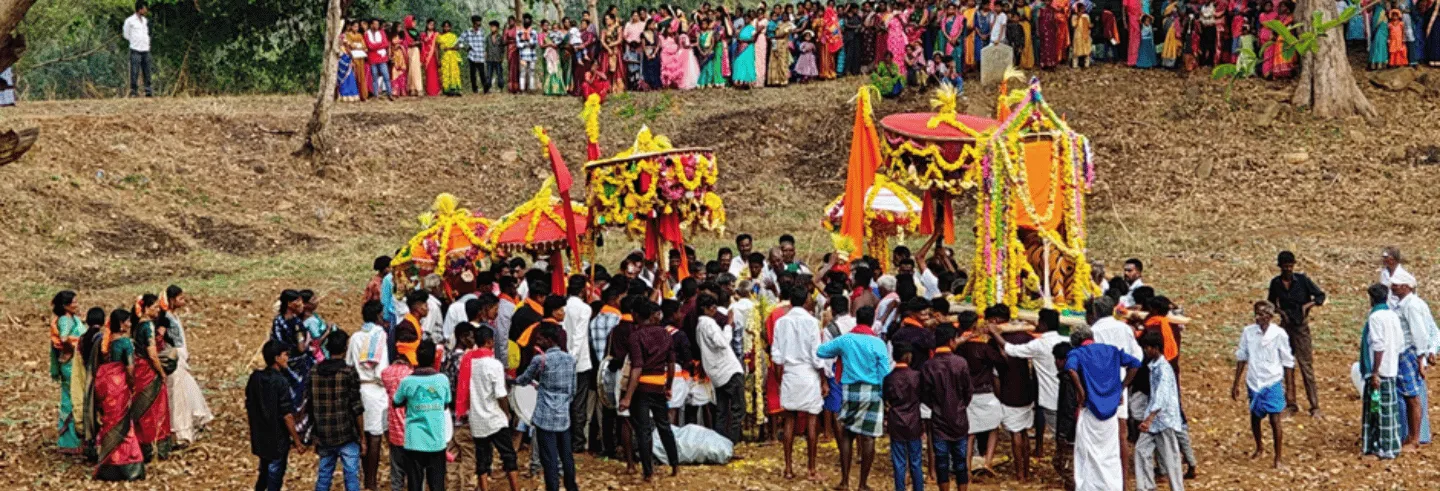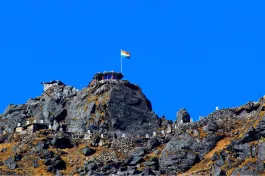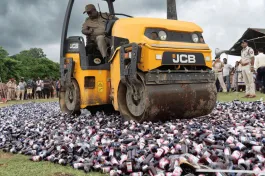A dazzling sun warms the air as Soliga women gather in their finest silk sarees, hair adorned with mallige (jasmine). Laughter and music drift through Purani Podu. Today is Rotti Habba, their festival of colour and community joy.
Soligas are an indigenous, forest dwelling tribe of the Kaveri river basin and its adjoining hills in Karnataka and Tamil Nadu They have historically lived in these regions and have fought to reside in their ancestral home – the forest. To the Soligas, the forest is not just a home but a spiritual extension of themselves—it is alive, nurturing, and sacred. Purani Podu is a village or podu in the Biligiri Rangaswamy Temple Tiger Reserve in Chamarajanagar district, Karnataka, which was declared a wildlife sanctuary in 1974 and a tiger reserve in 2011.
Times have changed. In the last 20 to 25 years, there have been a lot of restrictions on the movement and activities of the Soligas.
Habbas, or festivals, are the lifeblood of Soliga community life. Their worship practices are diverse and closely connected to the local environment. They are not mere rituals but occasions to affirm their identity, gather strength, and offer gratitude to the powers that protect and sustain them.
When the monsoon clouds gather and the winds are favourable, the Soligas prepare for the doolu pooje (a pooja for the land), which marks the beginning of ceremonies honouring the land and their village gods. Once the harvest is gathered, they celebrate Hosaragi Habba (new ragi festival). It is a time of thanksgiving when the first grains of the harvest – ragi (finger millet), maize, and other crops – are offered to the deities. The first offering is made to female deities such as Tayamma, who symbolises the earth’s fertility. The clan gods follow. It is a modest, intimate offering of gratitude for the year’s bounty.
Rotti Habba is a much larger and grander celebration. It is not tied to a harvest but is a collective celebration of abundance and gratitude. It is not an annual affair but is held every few years. Before Soligas lived in settled podus, they were shifting cultivators, changing their base from one patch of forest to another. Since those times, Soligas have grown ragi as a food source. They would collect genasu (tubers like sweet potato) from the forest and cook it to eat with ragi.
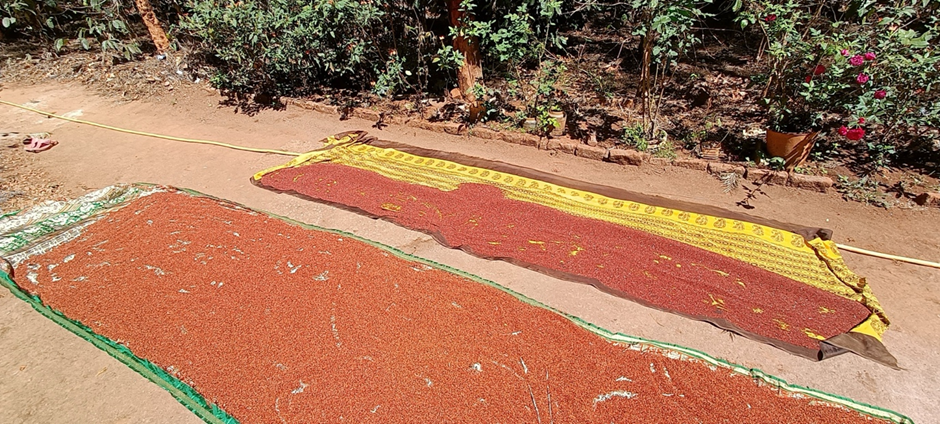
Times have changed. Over the last 20 to 25 years, there have been restrictions on the movement and activities of the Soligas. First, declaring the forest a wildlife sanctuary made them end shifting cultivation and settle in villages. Later, the status of a tiger reserve made illegal the harvesting of certain non-timber forest products and the use of fire as a means of clearing weeds. These have had a significant influence on the lives and practices of the Soligas.
When wild animals – barking deer, sambar deer, wild boar, elephants, and monkeys – raid and consume staple crops such as ragi, corn, avarekayi (hyacinth beans), and togari (tur dal), Soliga families had to work harder and longer to maintain their fields. Coffee cultivation was introduced to them as an alternative livelihood option. The Soligas were not new to the idea of coffee or how to grow it because the core area of the tiger reserve comprises coffee estates on land that the government has given on lease to private companies and individuals. During colonial times, the British began growing coffee in the region because it had a suitable weather pattern.
The Soligas shifted to coffee wherever they could. Coffee plants – less attractive to local wildlife – were safe and had higher market value. Those who have still not made the shift are in villages where the climatic conditions are not suitable for coffee plants. Otherwise, every household has a coffee thotha (plot).
Preparations and procession
Preparations for Rotti Habba start months in advance with the community agreeing on a day for the festival and the menu for lunch before money is collected from all houses. On the day of the festival, the jatra (procession) for the devaru (deity) starts at noon. The deity is decorated with splendour and mounted on a palanquin supported on the shoulders of six to eight boys of the habba committee.
Though a sea of phones blocks the full view, the triumphant hoots, shouts, and praises leave no doubt that they have successfully made it to the other side.
The jatra starts with the beating of the tamate or the drums, which is surrounded by dancing men and boys, inebriated as well as sober. Following them are the tamadis (priests), the mediums who have taken a vow to be channels for the deity. They are the most special men on that day because the deity speaks through them. After them come the bearers of decorative umbrellas and flags, who precede the main palanquin with the deity. In Purani Podu’s case, the deity is Lord Mahadeshwara.
Soligas have six kulas or clans, and each year, the deity for the procession is decided by a different kula. Every clan has a kula devaru, which they pray to. People from the same kula as those organising the habba are especially eager to attend it each year.
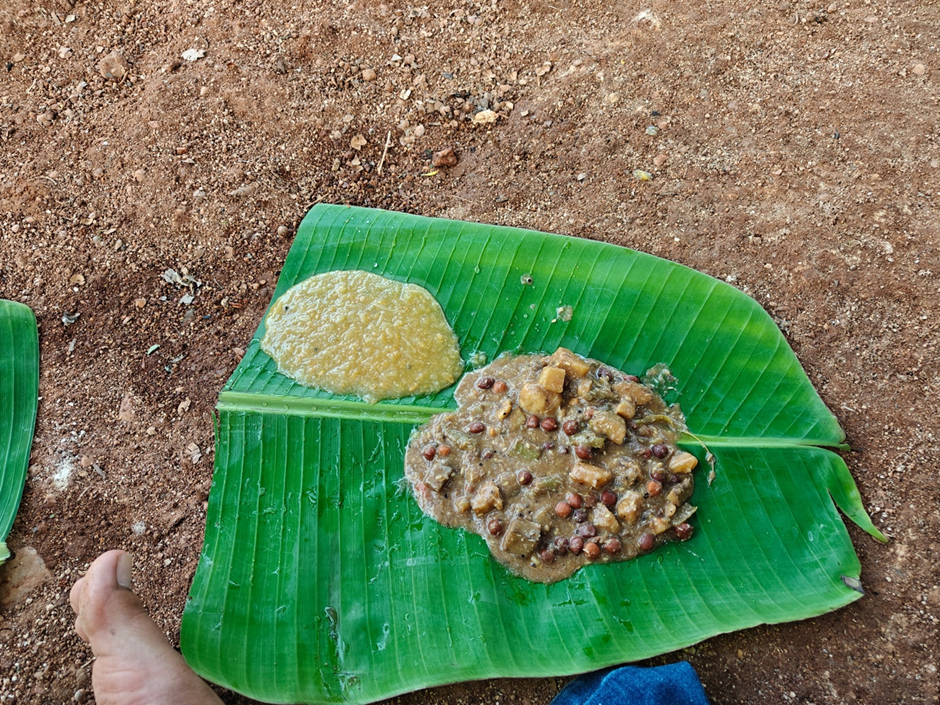
The deity on the palanquin bedecked with flower garlands is the grandest thing of all in the jatra. In about an hour, the procession reaches a small temple under a peepal tree. Here, a coal pyre is prepared before the temple and the people crowd around to catch a glimpse of the priests walking on the embers. The senior tamadis do it first, followed by the junior priests. They prepare or warm up for the feat by running up and down nearby.
Finally, the moment arrives, and they step onto the fiery coals. Though a sea of phones blocks the full view, the triumphant hoots, shouts, and praises leave no doubt that they have successfully made it to the other side. Then, the faithful approach the still smouldering konda, scoop a pinch of ash, and press it gently to their foreheads, as a blessing from Mahadeshwara.
As soon as the sacred part ends, a hush falls as everyone settles into neat rows for the feast. Volunteers spring into action. Banana leaves are laid out, men ladle generous helpings of food onto each leaf, and women pour the water to wash it down. No Rotti Habba feast is complete without steaming payasam – sweet rice and jaggery pudding – and the savoury delight of kallehuli – black chickpeas simmered with pumpkin and raw banana.
Jadeswamy, a participant, told me that one could have all the sweets of the world like Mysore pak and balushahi, but the habba would be incomplete if the menu did not include payasam and kallehuli. Ragi rotis were also an essential part of the festival, but they have now been replaced by rice, which is served with sambhar. Payasam and kallehuli are served first, followed by rice and sambhar.
After everyone has eaten to their heart’s content, people take a break. Men who are not on the wagon retreat to the margins to share drinks with friends and smoke. Meanwhile, women lay out chappes (mats) or bedsheets on which they can rest comfortably at night while watching the singing and dancing.
In earlier years, Soliga men would perform the traditional gorukana dance and women would sing hadduke songs, which were about elements of natural life. A jogi would be present to set the tone for the gorukana songs around a nerale (jamun) tree. He would be accompanied by a pinasi (a shehnai-like instrument), maddale (drums), and tala (cymbals), and set the pace to bring the audience alive. The women would sing, looking at the men dancing in a circle before them.
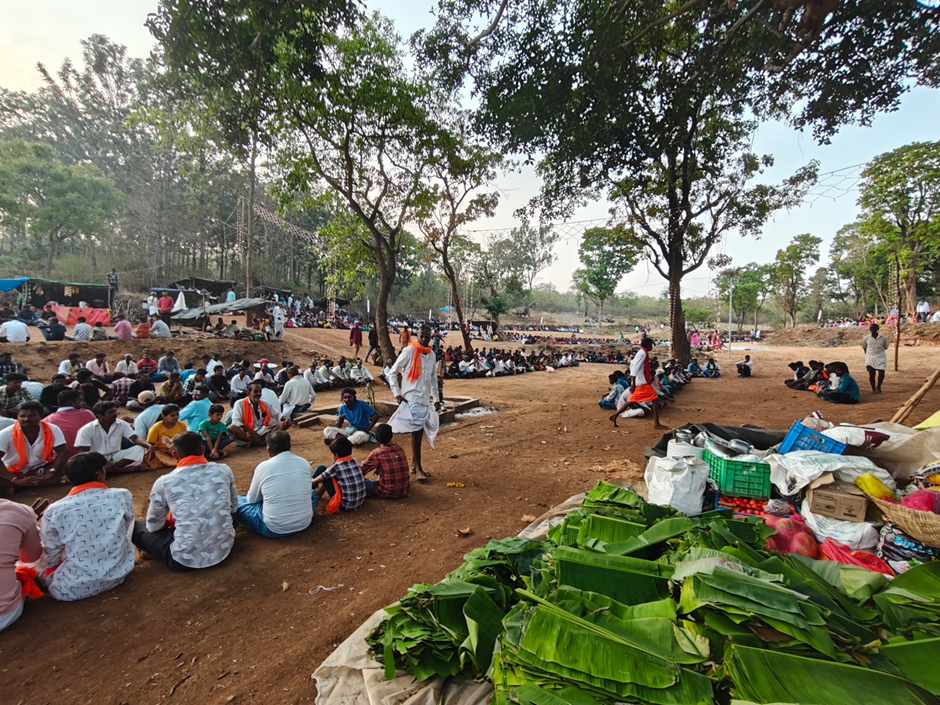
But the times they are a-changin’. The singing of women has now been replaced by DJs and loudspeakers, while the traditional songs have given way to Kannada movie songs or tunes popular on Instagram. Meanwhile, women have advanced to the status of dancers. Now, men and women dance in two separate circles, which is arguably better than the earlier practice.
As night falls, the festival provides an opportunity for young people to begin courtship. A boy and girl who fancy each other will toss small pebbles – today often replaced by sweets, chocolates, or biscuit packets – to signal their interest. If the gesture is returned, the pair slips away into the nearby forest for two to five days to live on their own, or a relative’s house in the forest. To test how compatible they are before rejoining the community.
Once they are back, they can discuss the matter of getting married in front of the kula elders, who decide on a date for them to get married. A small function takes place in the temple and the couple is declared to be married.
However, with youngsters now aspiring to study, go out to cities, and get jobs, this practice is facing a challenge. Today’s youngsters participate in all-night dancing, but the decision to get married is not taken in haste. Earlier, youngsters used to get married by the time they were 15 or 16, but that age has now increased to 20 or 21, giving them a larger window to view life as individuals before tying the knot.
This practice is a far cry from the arranged marriages that are prevalent in our country because the men and women are here considered as individuals mature enough to decide who to marry. They both have equal autonomy to make a decision.
Change is a way of life
The Soligas’ traditional forest management practices, their farming patterns, and their interaction with the forest have shifted over time. New conservation policies, the introduction of cash crops, restrictions on access to the forest, and modernisation have all played their part. This has brought about a significant change in the Rotti Habba as well.
Coming together as a community, they grant their youngsters the freedom to explore and choose their partners, both for life and for dancing to a hadukke or a song played on a speaker.
Earlier, ragi would be cleaned, dried and made into rotis for the festival. It was both harvested from the land and collected from the forest. The ragi would first be offered to the kula devaru, and then be had by the community. But now the ragi roti is only there in name in many parts. It has been replaced by rice in almost all village-level celebrations. Ragi rotis are still made, either for the ragi pooje, which is held on a smaller scale every year, or only to be offered to the devaru during Rotti Habba. It would be fair to say there is not much roti left in Rotti Habba these days.
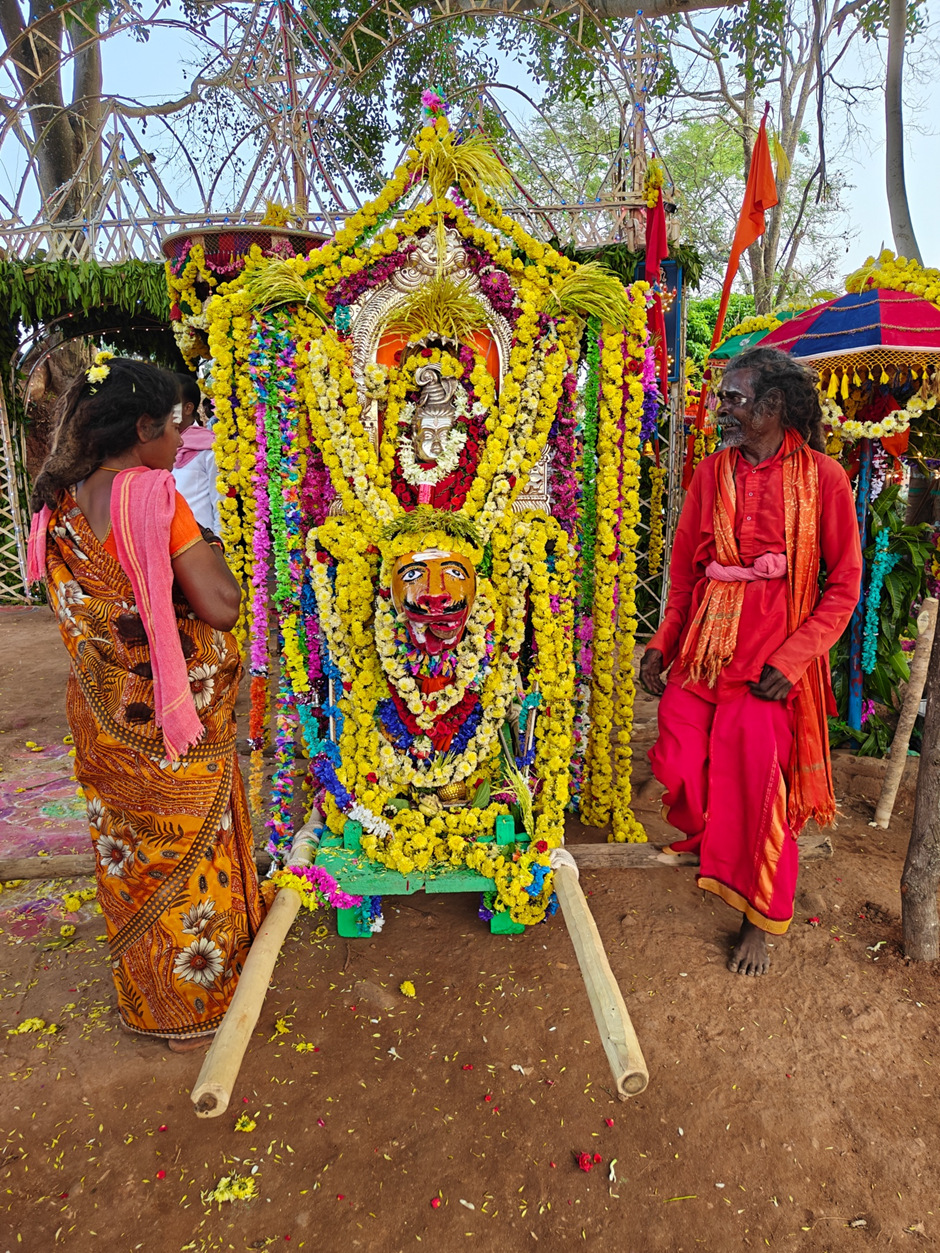
The landscape and its people are changing in myriad ways. Soliga traditions have been fused with newer practices, and the customs of various other communities have been absorbed by the community—for instance, the Ganesha festival and Ugadi are celebrated in a much grander manner these days. But the essence of celebration—coming together and being grateful for the bounty of the harvest—is still maintained.
Soligas take pride in their culture and how it sets them apart from others. Coming together as a community, they grant their youngsters the freedom to explore and choose their partners, both for life and for dancing to a hadukke or a song played on a speaker. Change is bound to happen in any community. New ways have come into the lives of Soligas but they still preserve the core rituals and traditions that sustain their community, demonstrating their resilience and deep loyalty to their clan deities.
Prachi Kardam is a PhD scholar with the Ashoka Trust for Research in Ecology and the Environment (ATREE), Bengaluru. Sathyapramodh H.B. is a consultant working with WWF India.

